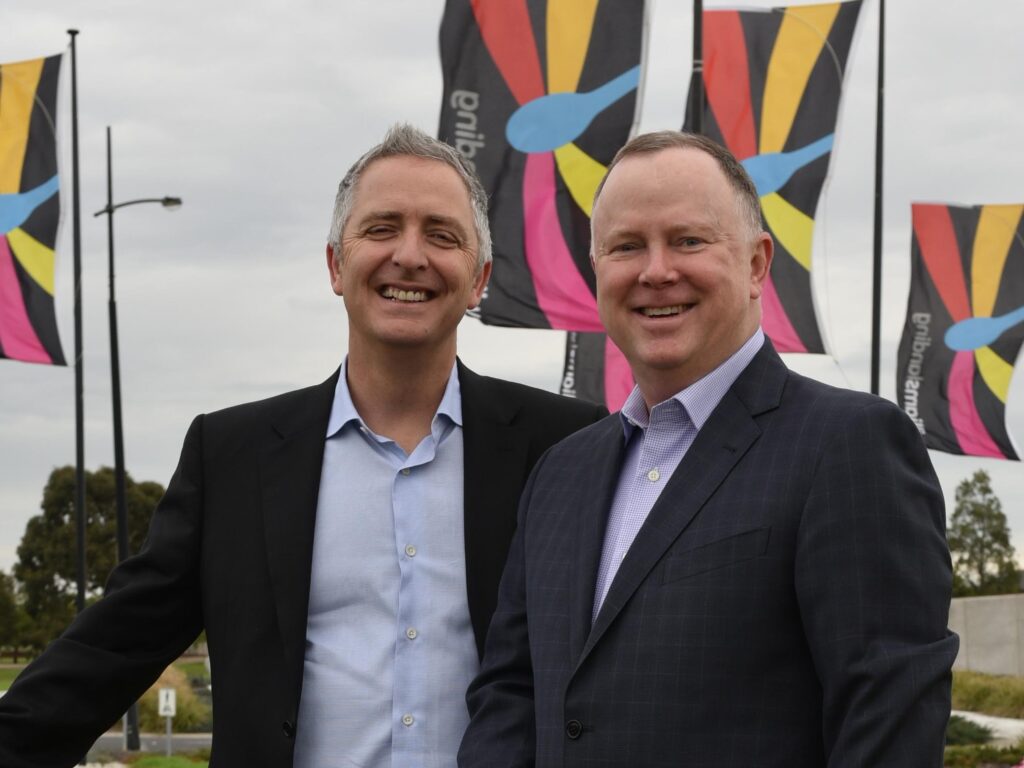
Carl’s Jr., the US burger brand that slipped into the Australian market a couple of years ago, has grand plans for growth, with 11 stores lined up for Australia over the next 12 months as part of its goal to reach 300 restaurants nationwide.
Jason Marker, global chief executive officer at Carl’s Jr., says “I think the brand fits with the Australian psyche. It’s a bit disruptive, irreverent, impossible to ignore. I think that kind of attitude and tone resonates in Australia.”
So how is the business going to achieve its growth targets in a crowded fast food marketplace?
Marker, visiting Australian restaurants in the burger chain, alongside international director Ned Lyerly, spoke to Inside Franchise Business about the plans for expansion.
Carl’s Jr. now numbers 4000 restaurants globally in a burger marketplace worth $20bn.
“We’ve tripled our restaurant count in 10 years and we’re expecting 1000 in the next five years. Australia is a key market for us,” he reveals. A corporate office will be opened here this year with about 10 staff.
“Australians are really discerning about food quality, they eat a lot of QSR but try to optimise it. We definitely have a more premium offer always made to order, hand made, crafted. The brand is a Californian brand, and the beach culture imagery around it resonates.”
The Carl’s Jr. presence in Australia is just five outlets, but three of these have been the biggest international openings for the chain in their first month of trade.
The pace of growth is picking up though.
“We’re expecting to build 300 in the next 10-15 years across Australia.”
In addition to the 11 already mentioned, there are 20 further outlets in the pipeline.
New Zealand already numbers 18 Carl’s Jr. outlets.
Launching the brand on the New South Wales’ Central Coast allowed the business to put together strong foundations before extending its footprint, Marker said.
“It’s really important for us to do this well. It’s not about growing rapidly at all costs, it’s about the right people, the right locations.”
Lyerly explains the focus is on high quality, grade A sites in South Australia, Queensland, New South Wales and later Victoria.
There are a number of prototypes for franchisees to consider from drive through to 250-280 sq m store to a small 60sqm foodcourt outlet.
“We are looking for franchisees in greater Sydney area. We do want to penetrate the market,” he says. “We’re very deliberate in selecting franchisees. We look for franchisees that bring a lot of retail and restaurant experiences, and an ability to acquire real estate. The sales levels have generated franchisee interest.”
Marker says the business is extremely focused on restaurant economics.
“I’m clear, when our franchisees are doing well and making money, that’s how we make money. We have equity restaurants but we own to learn. We’re a franchise operation. When a franchisee is not making money it’s our focus.
“We approve site selections and operations things they do, we have a lot of experience in making sure they don’t trip up.
“We take our model and give people the head start. There’s absolutely no advantage ever to have a franchisee fail, we won’t get future franchisees.
“It’s about partnerhsip and people capability, right people, fantastic processes and systems, and brand identity. You must stand for something, in a busy category you can’t be ‘me too’.
“You have to stand for something compelling and often different, you don’t have to appeal to everyone.”
Marker said “The reality is Australia is a competitive landscape. In the food courts, QSR environment, you’ve got to be really good.
“The number one thing is fantastic product that has to be delivered to the customer consistent with how the customer wants today.
“We have the best burgers in QSR, the best assets, a service system that’s more hospitable than other QSR. We’re focused on made fresh to order, table service, more touch points for customers.
“Our restaurant assets are new and fresh, more urban industrial, wood, a contemporary envrionment.”
Marker points out there will be customisation to the menu to suit the local market. “Our icons work everywhere and are tried and proven, but there will be an Australian flair to the brand,” he says. “We use Angus beef all over the world. But here it’s Australian Angus.”

